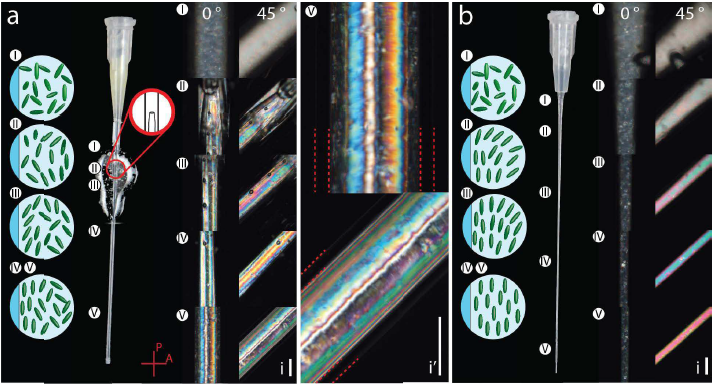A group at the Swiss Federal Laboratories for Materials Science and Technology, Empa, is investigating ways to 3D print cellulose. As the most abundant organic polymer in the world, the material is sustainable, and biocompatible, presenting great potential for medical research.
Recent progress made at Empa demonstrates how to 3D print cellulose nanocrystals (CNCs) as a material reinforcement. Experimentation also shows how to tune the orientations of these CNC “building blocks” to achieve different properties in a finished object.
In addition to advancements for the team’s specific field of interest, the research findings, as stated in the abstract of a study about the method:
“offer powerful quantitative guidelines for the digital manufacturing of composite materials with programmed particle orientations and properties.”
Cellulose nanocrystal ink for 3D printing
CNC inks for 3D printing were developed as part of previous Empa project in 2017. At this stage of development, the team critically identified the anisotropic properties of the ink which was an important step forward to rending the material suitable for biomedical applications.
In an effort to better understand the alignment of these anisotropic CNC particles, the Empa team has now studied the affects of sheer stress applied to the ink when extruded. The method under study is direct ink writing, achieved at Empa through the use of an EnvisionTec Bioplotter.
How to achieve particle alignment
CNC particle alignment in the 3D printer ink is observed by the team through the use of in situ polarization rheology. Placed in a rheometer, the ink is exposed to a steady sheer rate. Then, using a polarizer, optical images are taken of the mixture showing how the particles align over time.

Through observation, the team discovered that, “The level of particle alignment achieved through extrusion-based 3D printing of cellulose containing inks can be varied widely depending on the rheological properties of the ink and the type of flow imposed during the printing process.”
Based on this understanding, the team could then estimate the effects of shear stresses on the particles during the 3D printing process, and use it to tune the outcome.
Go with the flow
As proof of their hypothesis, the team experimented with 3D printing nozzles of different geometries (and shear rates) to tune the orientation of CNCs in the ink. In the results two flow conditions are described: “pure shear” and “extensional flow.” The 3D printed effects that these two conditions achieve are described as follows:
Firstly, “Filament architectures comprising an aligned shell around a randomly oriented core is typically produced under pure shear conditions,”
And secondly, “stronger alignment is observed if the printing nozzle geometry is designed to also induce extensional flow.”

The translation to medicine
Though the researchers stipulate that further work is needed to fully understand particle alignment, these findings have given them several means of development for future work. Nozzle dimensions, printing conditions and rheological properties can now all be designed to meet the specific needs of their project. A study is now underway for the CNC ink’s potential application as a cell scaffold which can be used to develop medical implants.
Michael Hausmann, a Master of Science at the laboratory, comments, “[…] nanocellulose based composites in the shape of an ear could serve as an implant for children with an inherited auricular malformation as for instance, in microtia, where the external ears are only incompletely developed.”
Further, “A reconstruction of the auricle can aesthetically and medically correct the malformation; otherwise the hearing ability can be severely impaired. In the further course of the project, cellulose nanocrystals containing hydrogels will also be used for the replacement of articular cartilage (e.g. knee) in cases of joint wear due to, for example, chronic arthritis.”
The full paper describing this research, “Dynamics of Cellulose Nanocrystal Alignment during 3D Printing,” is published online in ACS Nano. It is co-authored by Michael K. Hausmann, Patrick A. Rühs, Gilberto Siqueira, Jörg Läuger, Rafael Libanori, Tanja Zimmermann, and André R. Studart.
Is this your Research Team of the Year? Nominate Empa and more for the 2019 3D Printing Industry Awards.
For more 3D printing research updates subscribe to the 3D Printing Industry newsletter, like us on Facebook and follow us on Twitter. Consider 3D Printing Jobs for your next research opportunity.
Featured image shows A “printed tree created using different [cellulose] inks and imaged by cross-polarized light” Image via ACS Nano



